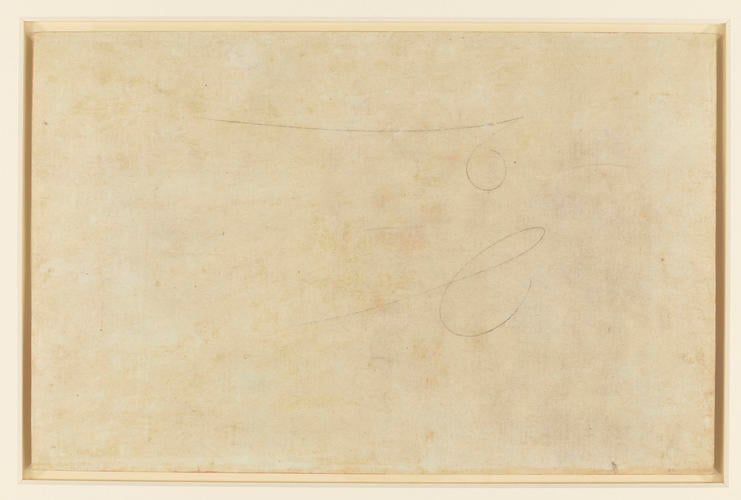Three Labours of Hercules c. 1530
Red chalk | 27.2 x 42.2 cm (sheet of paper) | RCIN 912770
-
A red chalk drawing showing three of Hercules’ labours: on the left, the killing of the Nemean Lion; at the centre, Hercules and Antaeus; on the right, Hercules fighting with the Lernean Hydra.
In a fit of madness brought on by the jealous Juno (Hērā in Greek mythology), Hercules (Hēraklês) killed his wife and children. Full of remorse, he sought the guidance of the Delphic Oracle, who told him to serve his cousin King Eurystheus for twelve years. Eurystheus set Hercules twelve seemingly impossible tasks, all of which he accomplished, and for this he was freed from the guilt of his murders and rewarded with immortality.
Here Michelangelo depicted three of Hercules’ labours. On the left is the slaying of the Nemean lion: its coat was impervious to Hercules’ arrows, so he clubbed the beast and then strangled it (though here the hero is shown rending its jaws in the manner of depictions of Samson and the lion). Hercules already wears on his back the pelt of a lion, and so Michelangelo has added the note at upper left, 'questo e il seco[n]do leone ch[e] ercole / am[m]azzo' (‘this is the second lion that Hercules killed’), with reference to his youthful exploit in slaying the Cithaeronian lion. At the centre is the killing of Antaeus – not itself one of the canonical Twelve Labours, but an additional obstacle as Hercules travelled to the garden of the Hesperides to steal the golden apples. The giant Antaeus would challenge passers-by to wrestling matches; he derived his strength from contact with his mother Gaia, the Earth, and so Hercules lifted him into the air before crushing him. And to the right, Hercules is shown struggling with the Lernaean Hydra. This many-headed monster grew two heads for each that was cut off; this is the moment before Hercules realised that he needed to cauterise the neck after each decapitation. In the first two scenes Hercules is overcoming the terrors; in the last, the Hydra seems to be overwhelming him, for although he kneels on its monstrous body, its heads attack him from above and sink their teeth into his sides, and he twists to look upwards with an expression of despair.Michelangelo shows the three scenes in isolation, with only a patch of earth below Hercules’ feet. The group displays multiple apparent ‘trios’: three levels of finish in the drawings (highly finished on the left, more sketchy on the right); three ways of depicting the human form (frontal, profile, three-quarters); three Ages of Man (Hercules is a youth at left, a mature man at centre, an older, bearded man at right); and even three stages of the artist’s own life, ‘from the easy victories of Michelangelo’s youth, through the combats with opponents like Bramante and Raphael in his middle years, to the oppressive struggle with commissions that, around 1530, threatened to strangle him’ (P. Joannides, Michelangelo and his Influence, 1996, p. 80).
The purpose and early history of the drawing are unknown. It seems to have had no preparatory function, and given the degree of cogitation and finish of the drawing, it was presumably made as a gift for a friend, in the manner of the even more highly finished sheets for Tommaso de' Cavalieri (see RCIN 912766, 912771, 912777). Unlike those sheets, the present drawing is not described in any early sources, and nor was it engraved in the sixteenth century.
A copy of the group on the left, in pen and ink, is in the Accademia, Venice. A drawing by Baccio Bandinelli (Sotheby's, 3 July 2019, lot 311), The Labours of Hercules (c. 1548), also in pen, is very similar in concept to the present drawing.Provenance
Listed in George III's 'Inventory A', c. 1800-20, p. 45, 'Mich: Angelo Buonaroti' / Tom. II (c. 1802): '1. Of the Labours of Hercules….Red Chalk'. Earlier provenance unknown.
-
Creator(s)
-
Medium and techniques
Red chalk
Measurements
27.2 x 42.2 cm (sheet of paper)
Markings
watermark: Roberts Anchor G: 'anchor in a circle with star, large'
Other number(s)









